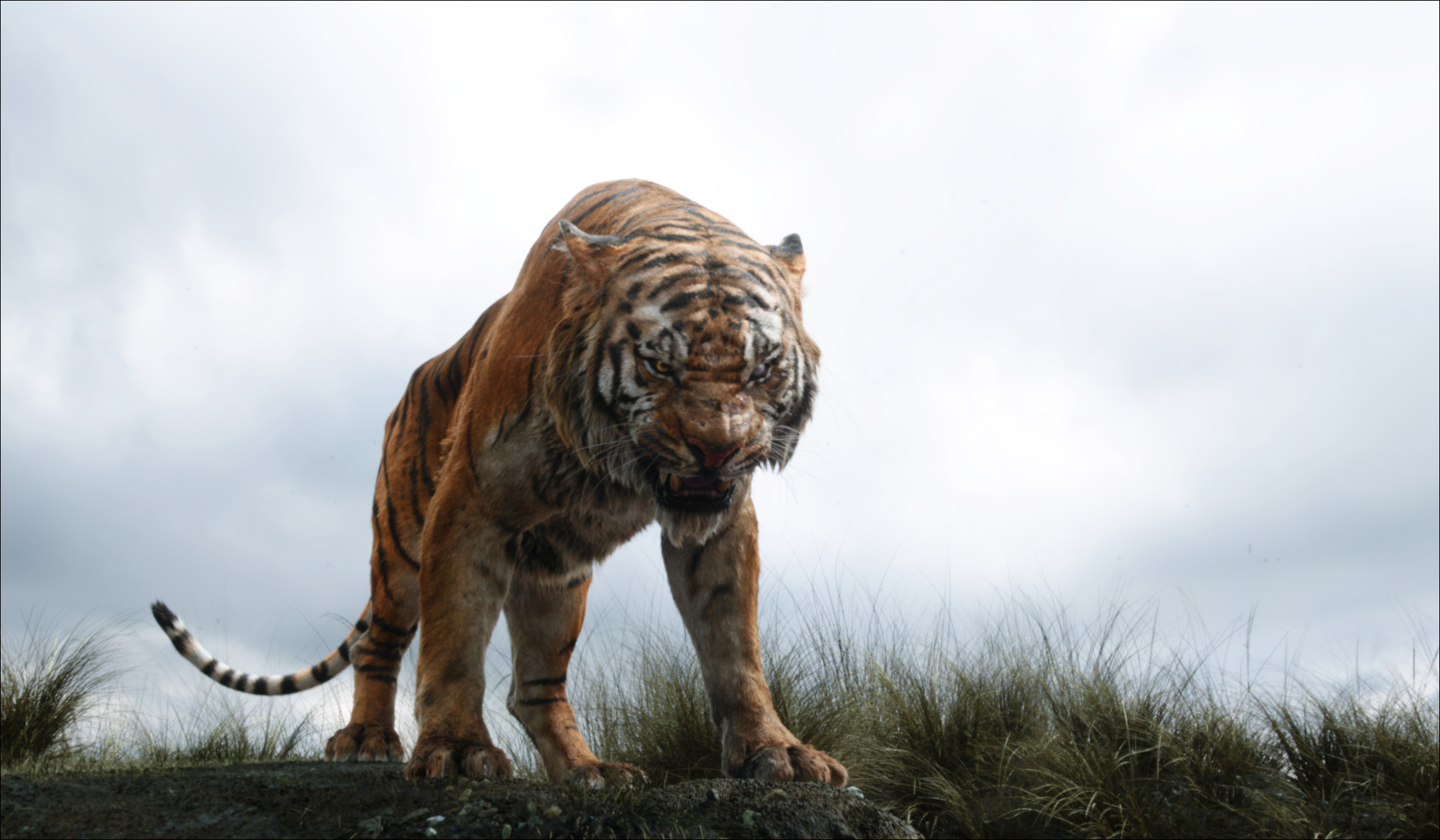WASHINGTON — It’s become one of the most unexpected but welcome trends in Hollywood, that Disney would not only go on a major live-action kick, but that it would get better with each entry, from Angelina Jolie in Robert Stromberg’s “Maleficent” (2014) to Cate Blanchett in Kenneth Branagh’s “Cinderella” (2015).
Which brings us to its latest and greatest, “The Jungle Book,” a live-action take on Rudyard Kipling’s 1894 literary classic that became a 1967 animated flick — Walt Disney’s last project before his death.
2016 Disney fans should rejoice: “Jungle Book” director Jon Favreau (“Iron Man”) proves he’s the “king of the swingers,” a fitting evolution for a guy who began his career writing “Swingers” (1996).
To put it in those terms, this “Jungle Book” is so money, it doesn’t even know it.
“Jungle VIP,” meet IMAX/3D.
We all know the tale by heart: “Man Cub” Mowgli is raised by wolves, who fear he’ll fall prey to tiger bully Shere Khan. Deciding the jungle is no longer safe for the boy, Bagheera the Panther leads Mowgli to the Man Village, crossing paths with Baloo the Bear, Kaa the Snake and King Louie the Ape.
If the “strength of the wolf is the pack,” get ready for a killer cast. Each choice is perfectly suited: Ben Kingsley (“Gandhi”) channels the sage wisdom of Bagheera the Panther; Lupita Nyong’o (“12 Years a Slave”) and Giancarlo Esposito (“Do the Right Thing”) have the acting ethos to play Mowgli’s wolf parents Raksha and Akela; Scarlett Johansson is a convincing seductress as Kaa the Snake; and we even get comic relief by the late Garry Shandling (“Larry Sanders Show”) as Ikki the Porcupine.
As for the famous singing parts of Baloo and King Louie, you can’t go wrong casting the beloved Bill Murray and Christopher Walken. Murray seems at ease converting Phil Harris’ “Bear Necessities” into a lazy-river ditty, having warmed up his pipes in Sofia Coppola’s “A Very Murray Christmas” (2015). Walken’s “I Wanna Be Like You” is smooth, but inevitably falls short of Louis Prima’s big-band jazz, instead rubbing his head in the shadows like Marlon Brando in “Apocalypse Now” (1979).
Standing out the most in this star-studded cast is the great Idris Elba (“Beasts of No Nation”) as the tiger Shere Khan. The 1967 animated Khan was deliciously voiced by George Sanders, who won an Oscar as one of film history’s best nasties: theater critic Addison DeWitt in “All About Eve” (1950).
Now, “fasten your seat belts” for Elba, who takes Khan in an even more sadistic direction. One scene in particular creates a juicy meta showdown: If you ever wondered which TV villain would prevail — Gus Fring from “Breaking Bad” or Stringer Bell from “The Wire” — “Jungle Book” has your answer.

This is how you build a villain in your movie, patiently stalking and prowling until the moment comes to strike, rather than arriving late in the game like Lex Luthor’s Doomsday. “Batman v. Superman” director Zack Snyder could learn from his “Iron Man” colleague, as Favreau brilliantly blends live-action stunts with CGI creatures for one of the most immersive 3D/IMAX presentations around.
Any initial skepticism upon Bagheera’s arrival will melt away as you get sucked into this world like one of Kaa’s hypnotic trances. By the end, you’ll forget that you’re watching digital creatures and embrace it as reality — and therein lie the magic. It’s truly amazing how lifelike these CGI characters have become over the years, from the tiger in “Life of Pi” (2011) to the one in “Jungle Book” (2016).
Still, all the digital effects in the world wouldn’t have mattered without the central live-action performance of Indian-American child actor Neel Sethi. Born in New York City, the 12-year-old is at once an adorable and commanding screen presence, offering the gullible innocence required for Baloo’s antics, before ultimately growing into his “baggy britches” to become a man among beasts.
This is the driving force behind Mowgli’s character arc: learning to embrace his humanity. At first, Bagheera and the other animals shun him for using so-called “human tricks” (i.e. tools of human ingenuity). It’s up for them — and Mowgli — to learn that their differences are a positive thing.
Hats off to screenwriter Justin Marks — who will also be co-writing the upcoming “Top Gun 2” — for layering this script with the character depth and thematic weight deserving of Kipling’s tale. Marks offers a fitting back story for Khan’s beef with Mowgli, which then ties into the animals’ overall fear of “man’s red flower,” a fiery menace that can reduce the entire animal kingdom to smoldering ash.
This fear provides an almost “Bambi” element to the film’s social commentary — offering a powerful message in a story that has always been filled with numerous anthropological interpretations.
Academics have long debated the 1967 classic as a product of the ’60s with a Black Panther (Bagheera), beatnik hippie (Baloo), hallucinating druggie (Kaa the Snake), marching military (elephants) and singing quartet of Beatles haircuts (vultures). Even more controversial are its monkeys who “wanna walk like you, talk like you,” segregationist undertones that it’s important to “stay with your own kind,” and resolution of a young girl who domesticates Mowgli by singing, “I will have a handsome husband and a daughter of my own and I’ll send her to fetch the water.”
Who knows which of these claims are valid — and which are convenient conclusions by liberal arts academics — but it’s interesting to note which elements the 2016 “Jungle Book” has decided to change. Mowgli is no longer seduced by a girl who wants to fetch the water. In fact, he doesn’t even end up back in the Man Village “where he belongs.” He remains in the jungle, as the creatures celebrate his outsider differences. It’s Khan who’s wrong for suggesting Mowgli is an “evil other.”
All we viewers can do is bow down before the movie in a show of respect, like Mowgli and the animals humbly do to the film’s symbolic elephants. While so many other special effects blockbusters get lost in the woods, “Jungle Book” always sees the forest for the trees. You’d be surprised how many films forget the fundamentals, but Disney again proves it’s mastered the “bear necessities” — and beyond.







